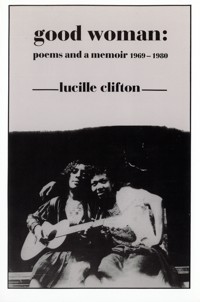
As editors who review poetry for The Atlantic, we read a lot of poems. Each week, there are new PDFs in our inboxes; our desks are covered with chaotic piles of books we’ve yet to crack open, and our shelves are already packed with old favorites. We’re also frequently asked, “What poetry should I read?” The question couldn’t be more reasonable, but embarrassingly, it tends to make our minds go blank. There are a trillion different collections for every mood: some cerebral; some wrenching; some playful, goofy, even strange. “That depends,” we’re tempted to say. “Do you want to cry? Or chuckle? Or wrestle with history, or imagine faraway futures, or think about the human condition?”
Perhaps the most honest approach is just to share some of the books that stick in our heads: ones that keep pulling us back, whether they comfort, shake, or perplex us. Still, choosing 10 collections was difficult. We wanted poems rich with detail and poems frugal with their words. We wanted poems that refreshed conventions and poems that took the top of our heads off, to paraphrase Emily Dickinson. In the end, the volumes we chose have very little in common except a belief that language, when compressed, rinsed, and turned even slightly from its everyday use, still has the power to move us.
The Mooring of Starting Out, by John Ashbery
Ashbery is the poet I take the most reliable pleasure in rereading, because of the multitudes his lines contain: I am just as happy to visit his late-20th-century meditation on an encounter with a 16th-century painting, in the poem “Self-Portrait in a Convex Mirror,” as I am to return to his experimental collages such as “The Tennis Court Oath.” More than anything else, though, I love Ashbery’s wistful lyricism, and the five books in The Mooring of Starting Out show him at his best. The poet has an ear for everyday, conversational English, which he scrambles and rearranges until the most tossed-off phrase seems like a love lyric from an old song you half remember. “A Blessing in Disguise,” to my mind his single greatest poem, concludes its ecstatic post-meet-cute delirium with the only thing left to say: “And then I start getting this feeling of exaltation.” — Walt Hunter

Sun in Days, by Meghan O’Rourke
Early in her 2017 collection, O’Rourke refers to life’s “inevitable accumulation of griefs”: the losses that build over time in any human existence. This book charts her own accumulating sorrows—losing her mother, struggling to conceive, developing a debilitating chronic illness. It’s filled with particularities: As a child, she talks to her mother through Styrofoam cups connected with string; as an adult, she obsessively watches videos of a gymnast, longing for a body that won’t fail her. But even the specific details unfold into universal, existential questions. (“I just need to find one of those Styrofoam cups / and what about you,” she asks her mother. “Where did you / go what kind of night is it there.”) Sun in Days reminds me that beauty and loss are inextricable—and random, in a way that’s both shattering and strangely relieving. “A life can be a lucky streak, or a dry spell, or a happenstance,” O’Rourke writes. “Yellow raspberries in July sun, bitter plums, curtains in wind.” — Faith Hill

Blacks, by Gwendolyn Brooks
This book collects many of Brooks’s volumes, including A Street in Bronzeville, from 1945; the poetic 1953 novel Maud Martha; and the extraordinary 1968 epic In the Mecca, half of which is set in a Chicago apartment building where Brooks worked in her youth. Additionally, one of the last sections in Blacks features her late and undersung lyrics of Black diasporic consciousness. Many of her vignettes illuminate the lives of Black women and families for whom the whole idea of making art from life has a “giddy sound,” to borrow from the poem “kitchenette building”—tantalizing, but also made difficult by economic exploitation and racism. Anyone who wants to understand 20th-century American poetry could start by reading straight through Brooks. — W. H.

The Study of Human Life, by Joshua Bennett
Bennett’s collection is divided into three sections, and the last revolves explicitly around his first child, born a year before the book’s release. The whole thing, though, is a meditation on what it means to create life—or to sustain it—in a world hostile to your existence. In the first third, Bennett writes about growing up in Yonkers, trapped by poverty and racism and low expectations, and about getting out—while knowing that he might not have, and that others didn’t. The second is an assemblage of speculative fiction, imagining the resurrection of Malcolm X and a young Black man killed by police. The last is similarly concerned with omnipresent danger and injustice (Bennett fears for his son), but it’s also about love’s redemption; as a father, he overflows with joy and wonder. Altogether, the book is a tender celebration of vulnerability and the strength that blooms quietly in its presence. An ode to tardigrades, microscopic invertebrates that can endure extreme temperatures, seems incongruous, but actually proves Bennett's later thesis: “God bless the unkillable / interior bless the uprising / bless the rebellion … God / bless everything that survives / the fire.” — F. H.

The Interior Landscape: Classical Tamil Love Poems, translated by A. K. Ramanujan
The publisher New York Review Books’s poetry series has done extraordinary service to verse in translation over the past 10 years, but my favorite of its volumes is this beautiful introduction to Tamil poetry. Written by both men and women during the first three centuries of the Common Era, these short love poems feature intimate, finely etched scenes of yearning that are set in a series of vivid landscapes, including forests and riparian environments. Ramanujan, a celebrated poet and scholar, provides a detailed chart of poetic devices that helps orient the reader to what may be an unfamiliar set of conventions—and to the old idea that convention itself, rather than novelty, might be a virtue. — W. H.

The World Keeps Ending, and the World Goes On, by Franny Choi
In one poem in her third collection, Choi imagines a note “from a future great-great-granddaughter.” The letter writer’s world sounds dystopian—but then, so does our current one. She wants to know what it was like to exist in the 21st century, rotten as it was with corruption, violence, and algorithm-driven mindlessness. “Did you pray / ever? Hope, any?” she writes. “You were alive then. What did you do?” That question haunts the book, which charts a number of tragedies, past and present—the bombings of Hiroshima and Nagasaki, the climate crisis, the pandemic—and asks what is to be done. Choi captures the absurdity of carrying on while everything is falling apart, and the impossibility of choosing anything else. But she also suggests that just envisioning a different world is something, even if it’s not everything. “What you gave me isn’t wisdom, and I have no wisdom in return,” the great-great-granddaughter writes. Still: “We’re making. Something of it. Something / of all those questions you left.” — F. H.
Adagio Ma Non Troppo, by Ryoko Sekiguchi, translated by Lindsay Turner
This short, dreamlike collection by the Japanese poet Ryoko Sekiguchi takes its cue and its source material from letters written by the 20th-century Portuguese poet Fernando Pessoa to his love, Ophelia. A fantasy plucked from the days before we texted “On my way,” these letters describe Pessoa’s plans to traverse the city in order to meet up with Ophelia. Translation typically involves some element of loss, as meaning is quite literally “carried across” from one language to another. In their narrative of desire for the encounter between lovers, Sekiguchi and Turner lead us astray with the ultimate missed connection: translation itself. This might be the only trilingual edition I’ve ever read, with Sekiguchi’s Japanese and French, and Turner's English translation of the French, printed on facing pages. — W. H.
The Good Thief, by Marie Howe
In The Good Thief, things are just slightly amiss: Scissors appear in strange places; a house seems to move farther and farther from the street; the sound of a laugh echoes in a shattering glass. The scenes contain an uneasy glimmer of the supernatural, and, indeed, the book takes its name from the Gospel of Luke. As Christ is crucified, so are two men on either side of him. One—the “bad thief”—mockingly demands to be saved, but the other is penitent; Christ promises he’ll remember that one and deliver him to paradise. Like the good thief, Howe’s narrators seem stuck between this world and another, brushing up against transcendence but still wretchedly mortal. How very human, that ache—the sneaking suspicion that perhaps there is more, or should be or could be, but it’s always just out of reach. — F. H.

Jonathan Swift, by Jonathan Swift, edited by Derek Mahon
Most people know Swift from his 1726 narrative, Gulliver’s Travels. But this collection of his short verse, edited by the Irish poet Derek Mahon, shows the tremendous range of the Anglo-Irish satirist. One of the greatest composers of occasional poetry (a genre that addresses specific moments or events) in English, and also one of the snarkiest, Swift could apparently write about almost any topic, including a sudden city shower, Irish politics, and his lifelong friendship with Esther Johnson, nicknamed “Stella.” His handful of birthday poems to Stella, written over decades, remain some of the most moving tributes to a companion in verse. As time passes, Swift ages, and Stella falls ill; the compression of the poet’s couplets tightens the heartstrings until they nearly break. Swift smiles through tears to make one last tribute: “You, to whose care so oft I owe / That I’m alive to tell you so.” — W. H.

Good Woman: Poems and a Memoir 1969–1980, by Lucille Clifton
Clifton’s oeuvre is so singular and so expansive that it feels impossible to pick just one of her books. Over the course of her career, she published 13 collections, and her writing expresses the gamut of joy, grief, fury, and love—frequently with incredible concision. A great one to start with, then, is Good Woman, which includes four of her collections as well as her memoir, Generations. Clifton is known for being a precise chronicler of the Black working-class experience, but to say that her focus was simply on the everyday—on “family life,” as many critics have put it—does a disservice to her ambition and intellectual heft. Her poems are concerned with justice, solidarity, and retribution; human limitations; autonomy and fate; history and mythology; the capacity for good and evil. None of them feels forced or affected—just wise, often funny, and always profound. — F. H.







